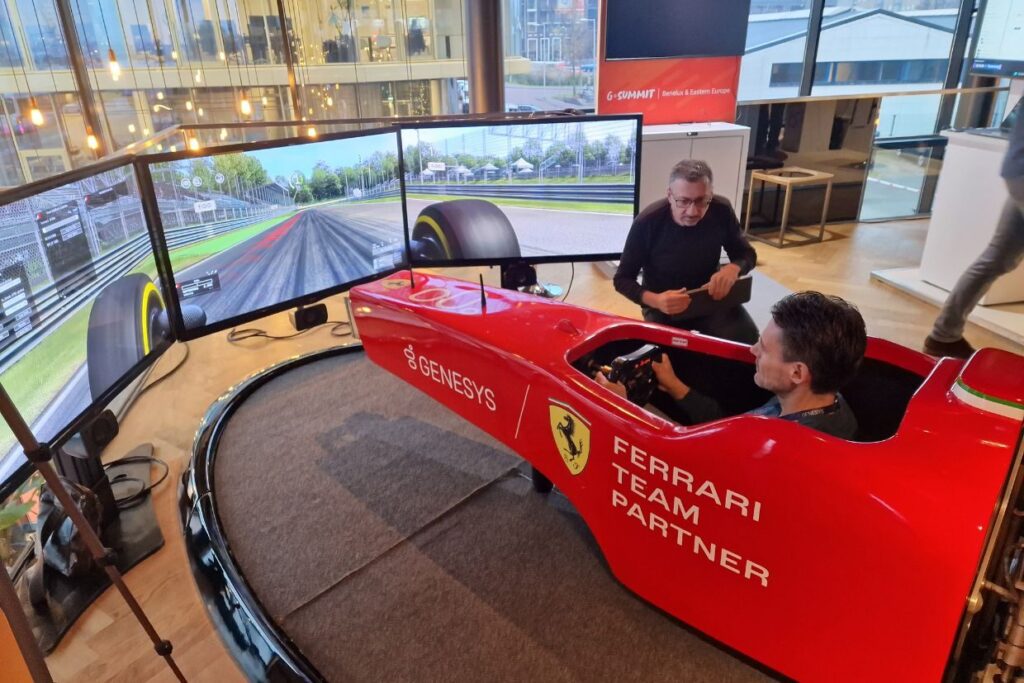
Formula 1 has always been a sport defined by innovation, and in recent years, one of the biggest game-changers has been the rise of high-tech simulators. What was once seen as a tool for casual gaming is now a critical part of driver development, car design, and race preparation.
Simulators are no longer just entertainment: they are an essential part of the modern Formula 1 ecosystem. Many current F1 drivers, including Max Verstappen and Lando Norris, honed their skills in the virtual world before achieving success on real tracks. Today, virtual racing is helping identify new talent, refine strategies, and reduce costs for teams.
An F1 simulator is far more advanced than a video game. These are state-of-the-art machines built to replicate the cockpit of a Formula 1 car, complete with steering wheels, pedals, and even motion rigs that simulate g-forces.
The software behind them models every circuit on the calendar in extreme detail. Engineers can replicate track conditions, weather changes, and tire degradation, allowing drivers to prepare for every possible scenario before even arriving at the race weekend.
Teams like Mercedes, Red Bull, and Ferrari operate their simulators almost around the clock, with development drivers running thousands of virtual laps each week to collect data and test new setups.
Simulators provide young drivers with an invaluable opportunity to train without the logistical and financial challenges of real-world testing. Virtual racing allows them to:
Lando Norris, for example, was a well-known sim racer before joining McLaren, and he continues to compete online between race weekends. Max Verstappen, too, credits sim racing for keeping him sharp and improving his racecraft.
Racing has also opened the door for new talent to enter the sport. Programs like World’s Fastest Gamer and the F1 eSports Series have turned virtual champions into real-world racers, proving that the skills developed in a simulator can translate to the track.
Simulators are not just for drivers: they are a crucial tool for engineers and strategists. Before a team brings new parts to the track, they test them virtually to measure performance gains and potential risks.
This integration of virtual and real-world data helps teams make more informed choices, giving them an edge over competitors.
If you want to know more about the integration of virtual and real-world in F1, you can click here.
F1 eSports has grown into a major phenomenon, attracting millions of viewers worldwide. Official competitions run by Formula 1 allow fans to compete on the same circuits as their favorite drivers, creating a new layer of engagement.
Teams now have dedicated eSports divisions that work closely with their main F1 operations. Some even use data gathered from their eSports drivers to gain additional insights. This crossover has blurred the line between virtual and real racing, creating a unique ecosystem where fans can aspire to go from gamer to professional driver.
One important point about it is the comunication in the sport and if you want to know more about connectivity in F1, you just need to click here.
Some of today’s most successful drivers have embraced simulators as an integral part of their careers:
These examples show that simulators are not just training tools, they are pathways to opportunity and success. When you read about this stories and the time they spent in the simulators, you can imagine that they need to train a lot to be a F1 driver. Do you want to know how much? Click here.
Virtual racing has transformed the way Formula 1 operates. Simulators prepare drivers for the unique demands of each circuit, allow teams to refine car performance before hitting the track, and create a direct link between fans and the sport through eSports competitions.
What was once considered a hobby has become one of the most powerful tools in motorsport. The next F1 champion might already be behind the wheel, not of a real car, but of a simulator, perfecting every lap in a digital world before making history on Sunday afternoon.
Image from: F1 Simulators


© 2024 RACEK Design. All Rights Reserved.
Discount Applied Successfully!
Your savings have been added to the cart.